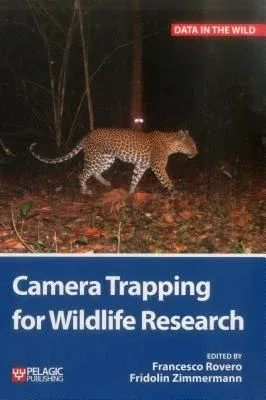Francesco Rovero
(Author)Camera Trapping for Wildlife ResearchHardcover, 6 June 2016

Qty
1
Turbo
Ships in 2 - 3 days
In Stock
Free Delivery
Cash on Delivery
15 Days
Free Returns
Secure Checkout

Part of Series
Data in the Wild
Print Length
232 pages
Language
English
Publisher
Pelagic Publishing Ltd
Date Published
6 Jun 2016
ISBN-10
1784270636
ISBN-13
9781784270636
Description
Product Details
Book Format:
Hardcover
Country of Origin:
US
Date Published:
6 June 2016
Dimensions:
24.64 x
17.02 x
2.03 cm
Genre:
Ecology
ISBN-10:
1784270636
ISBN-13:
9781784270636
Language:
English
Pages:
232
Publisher:
Series:
Weight:
793.79 gm